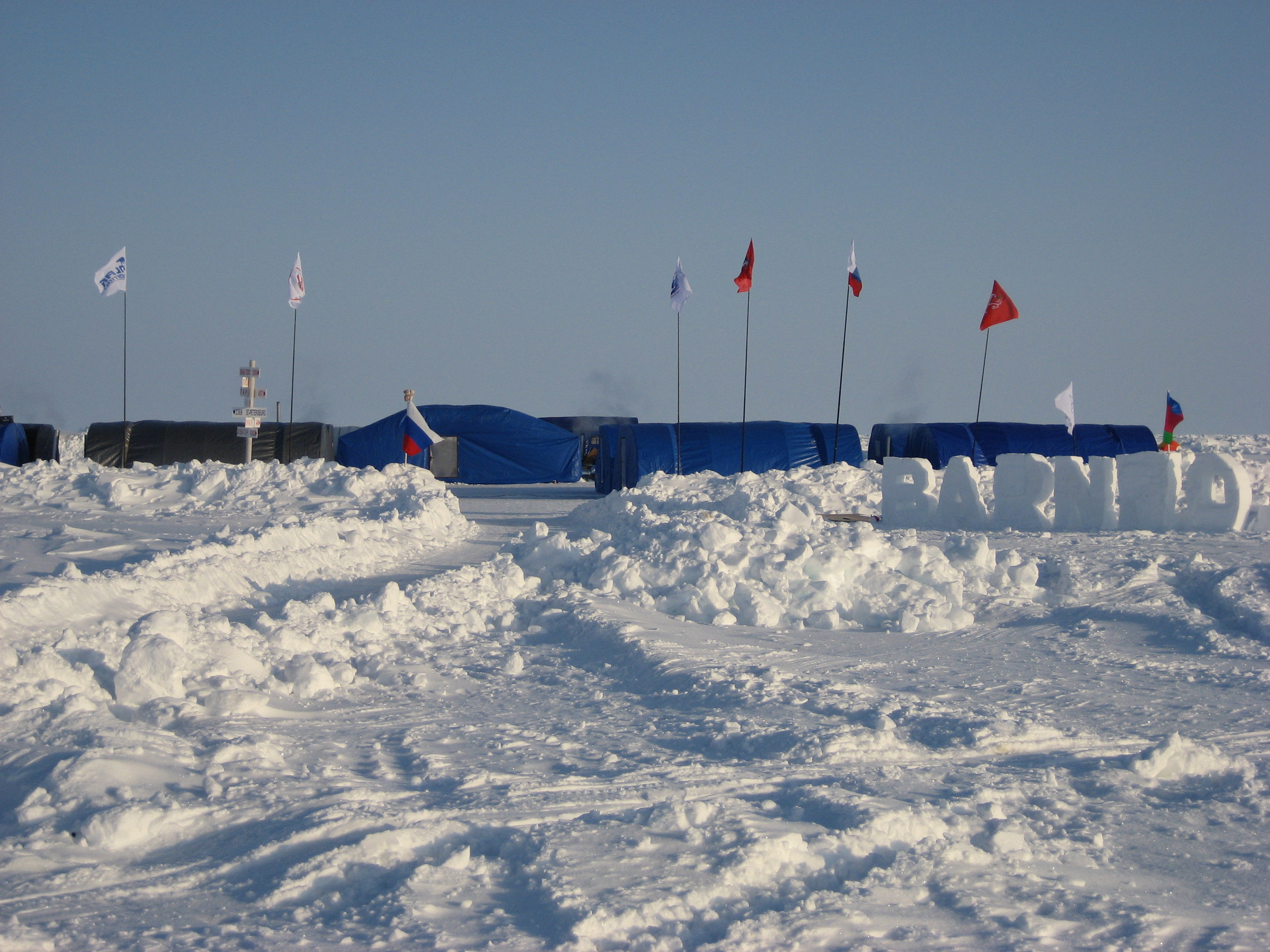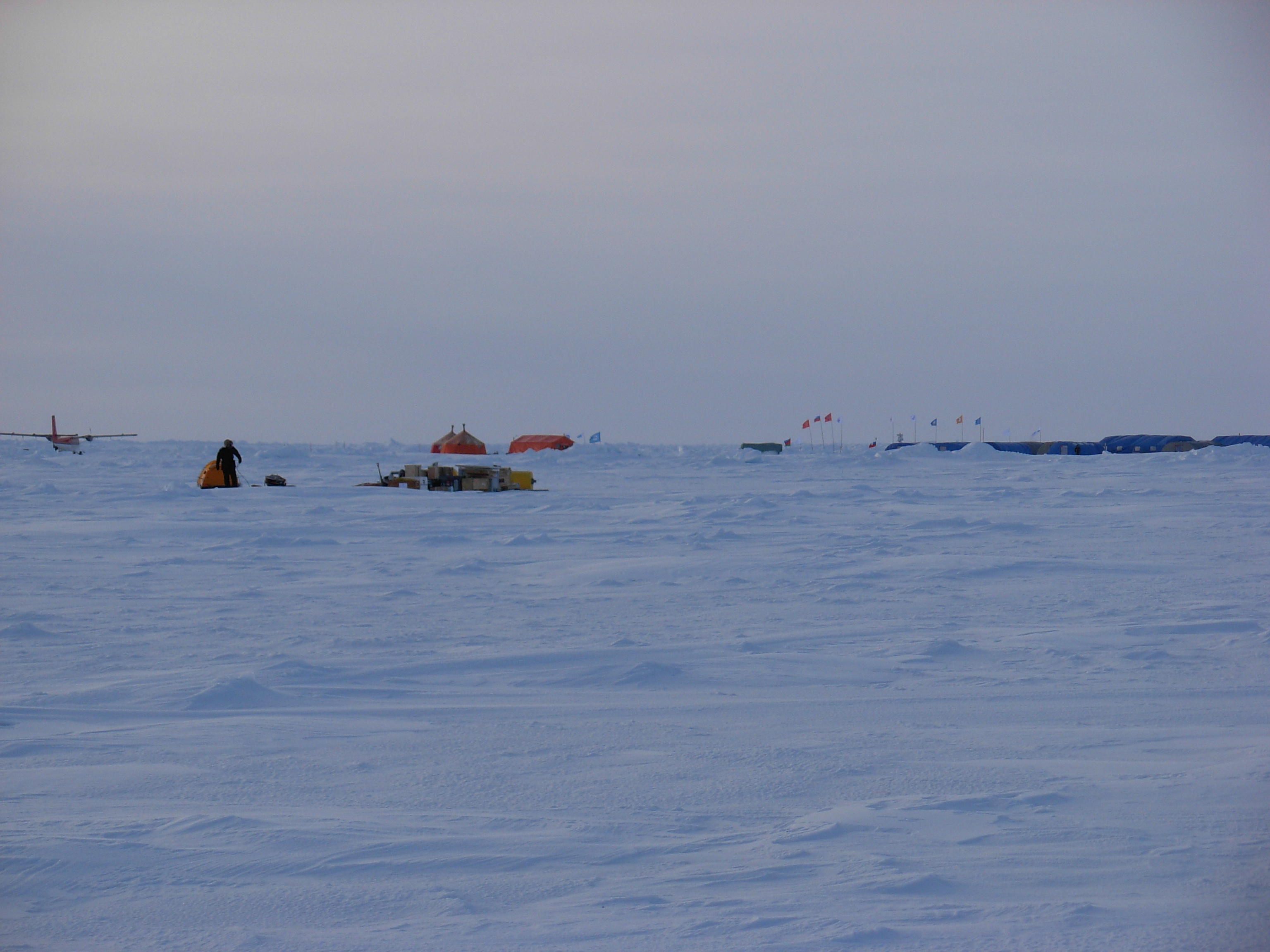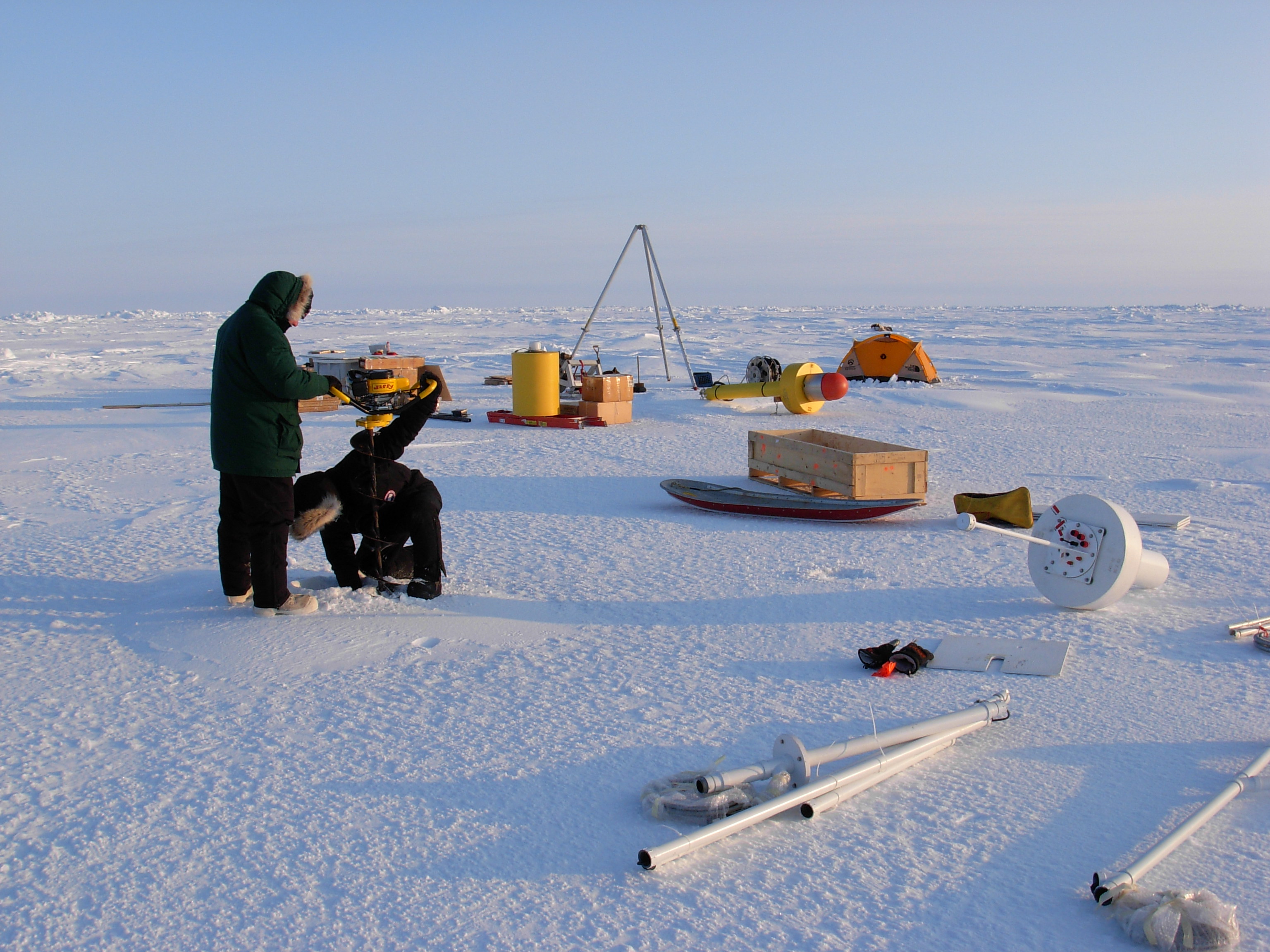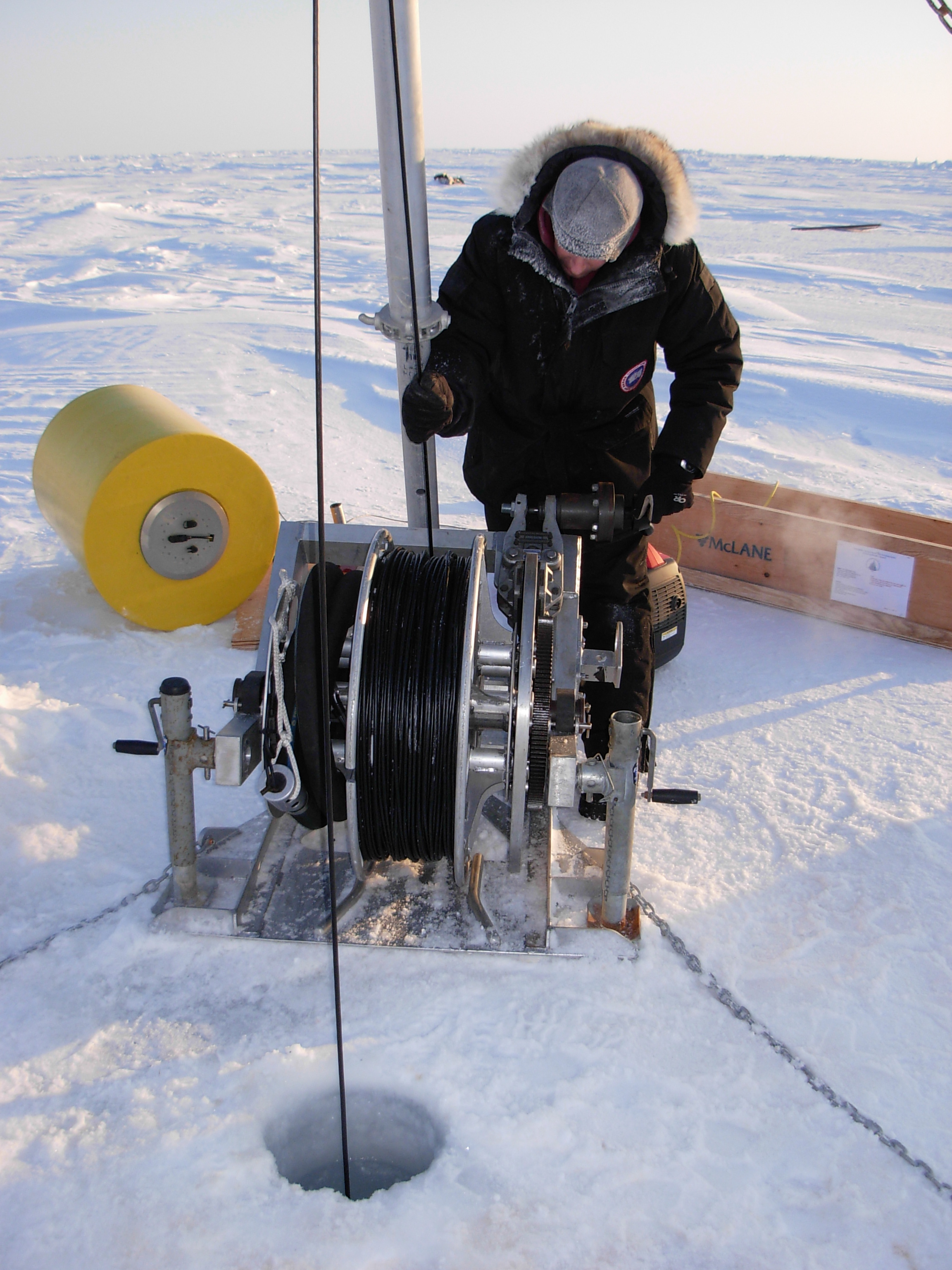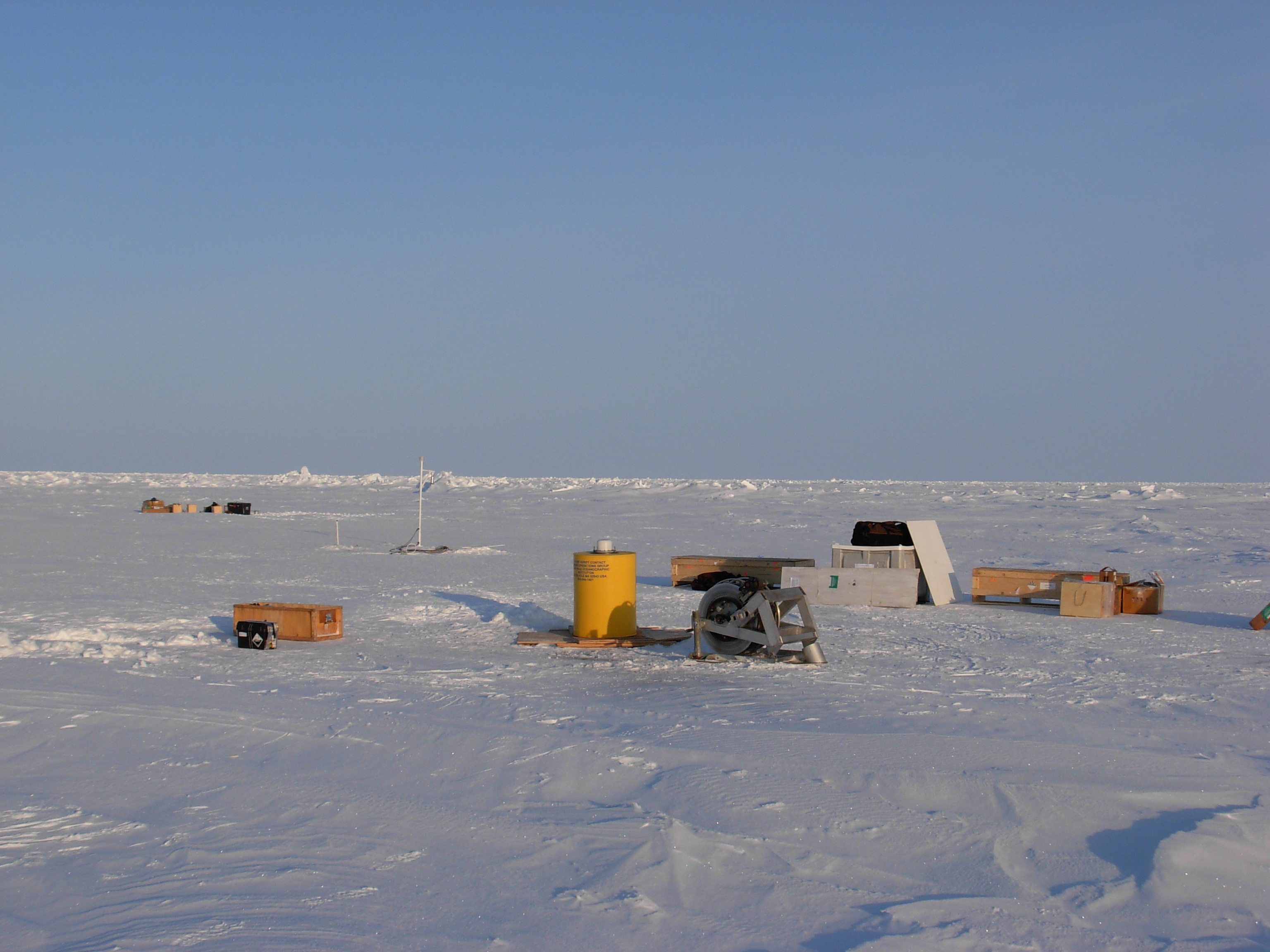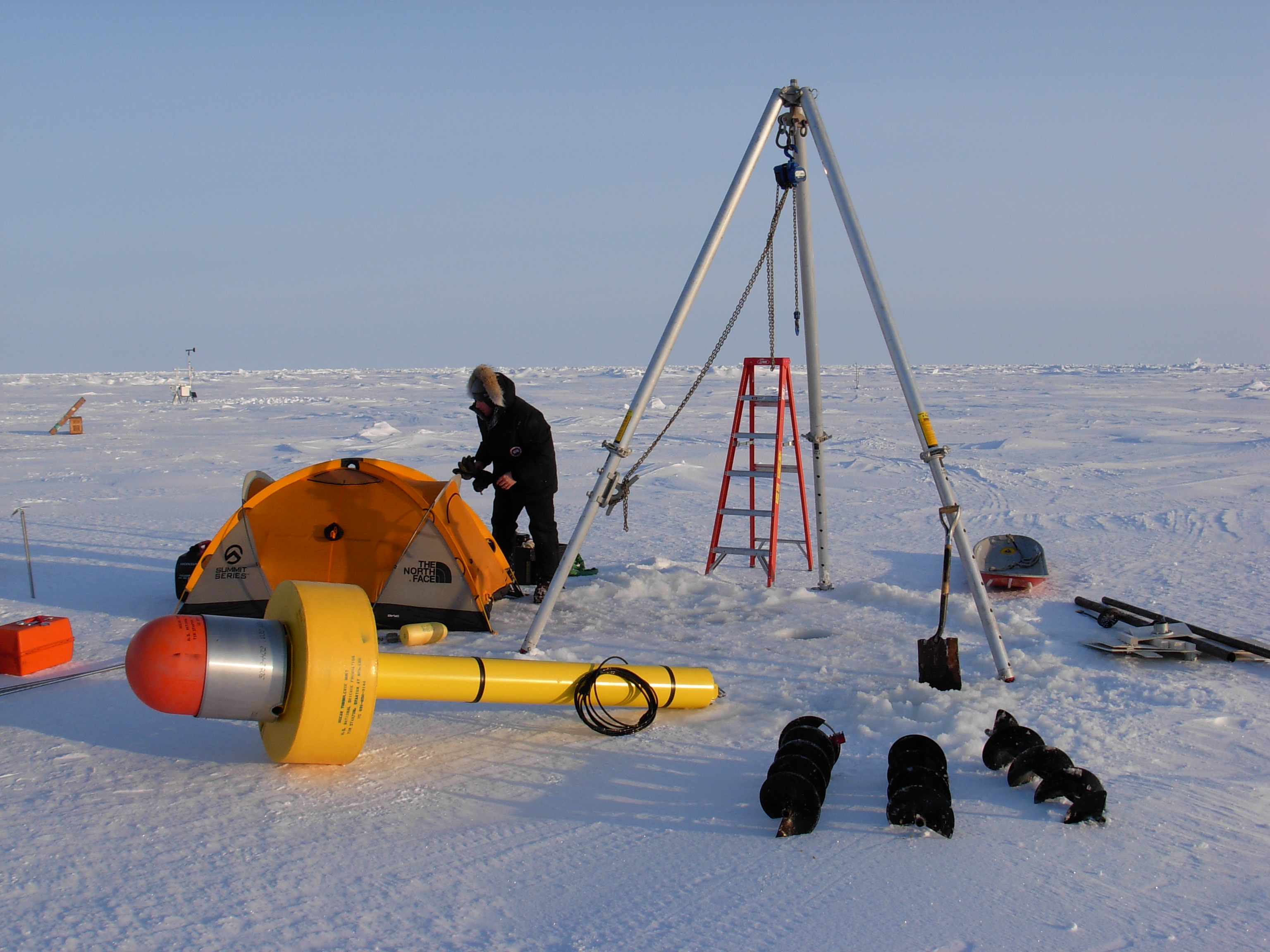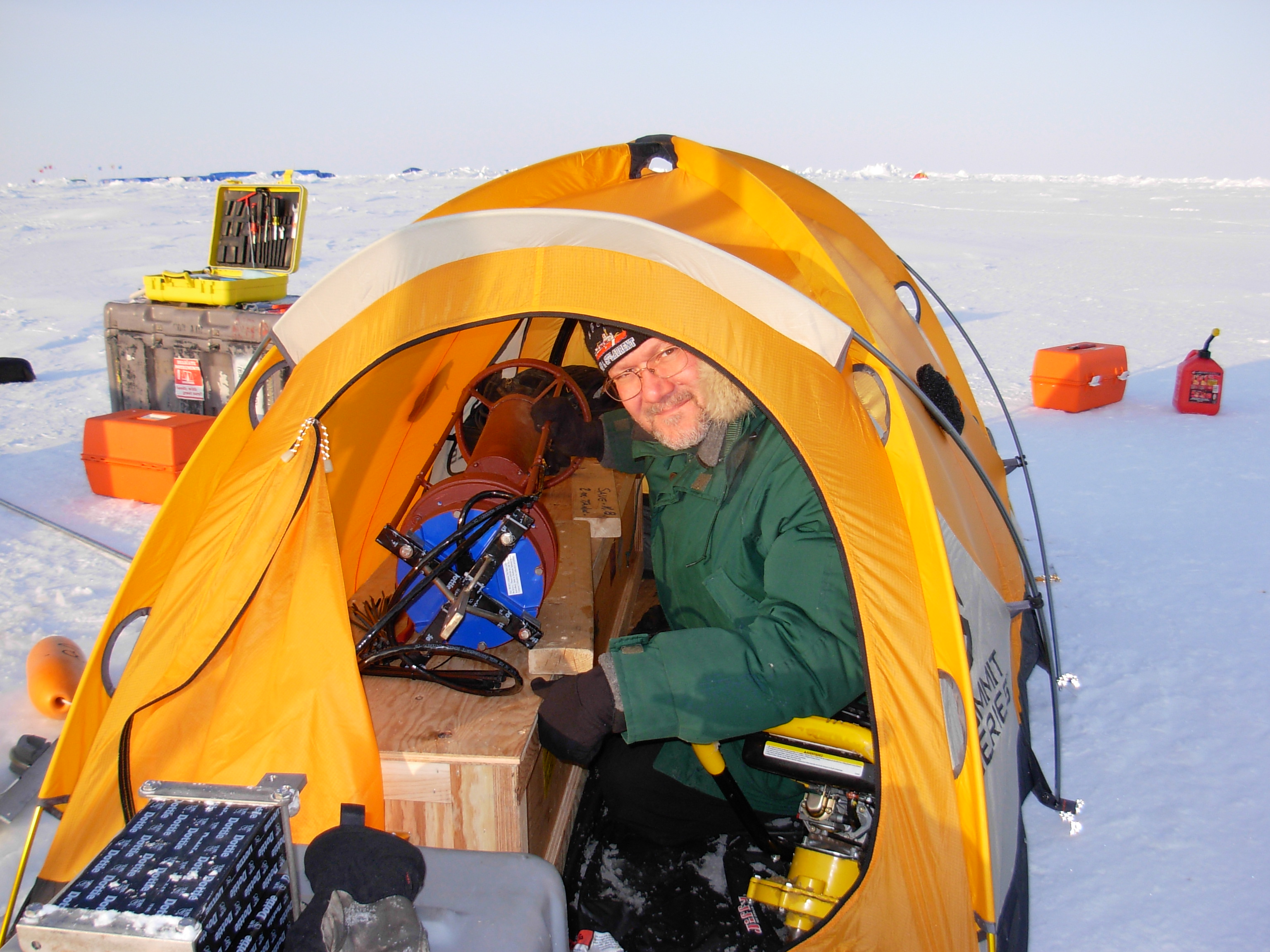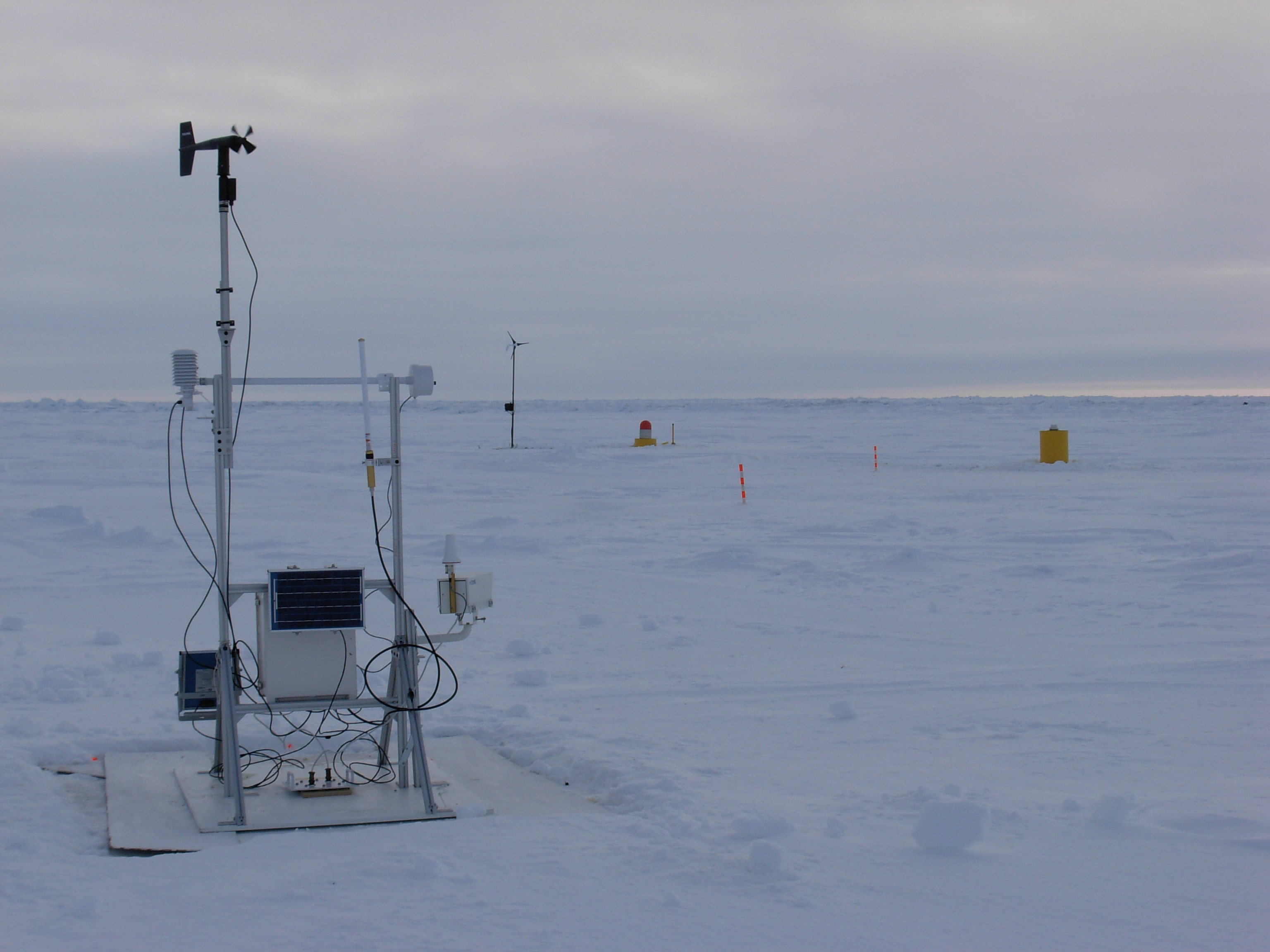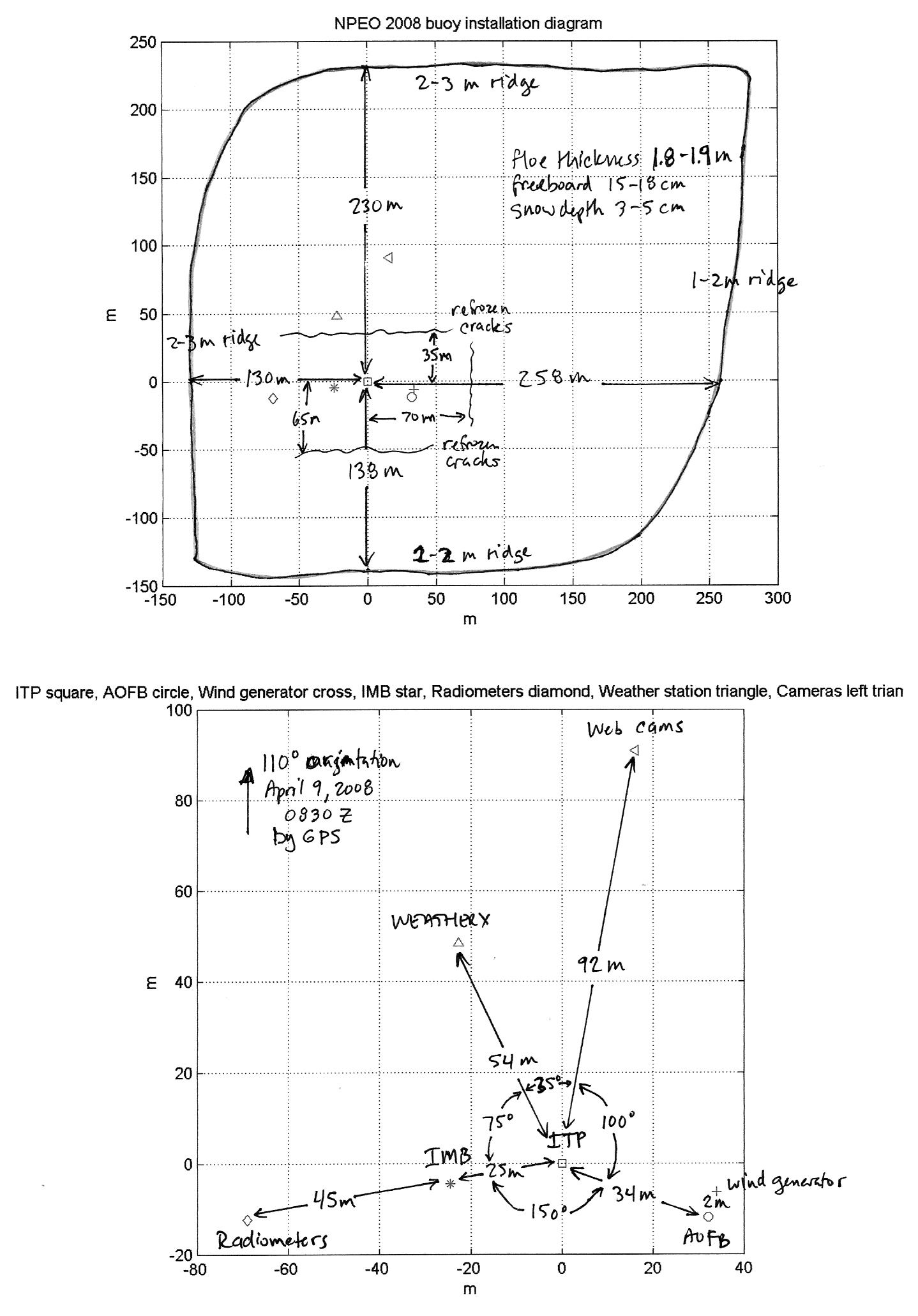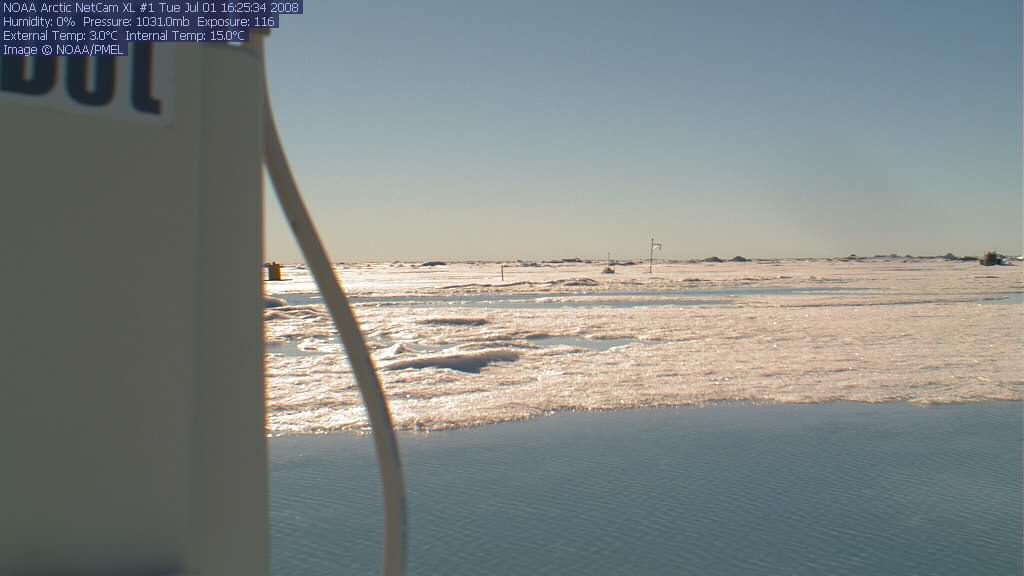ITP19 Deployment Operations
We and our gear arrived at the Russian ice camp on April 5 after a 2.5 hour flight on the Antonov from Spitsbergen. At first we can find no one that can speak to us in English, and have no tent arrangements, but with a little help from a friendly Russian scientist that we know, we are taken care of.
Next morning, we survey the surrounding ice with a 2-inch auger to determine thicknesses, and pick out a 1.9 m floe just behind camp, several hundred paces away. All the ice in the area is first year ice that formed since the previous summer in the large polynya in the eastern Arctic, and drifted to the present location. It is very homogenous, so there really is no choice, but to take the largest, closest floe available.
The IMB is installed on this day, the ITP on the next and AOFB on the day after while the Weatherex buoy (with webcam) is assembled and tested nearby. The air temperature is around -27 C, so in order to keep the underwater instruments warm on the ice before being deployed, we use a tiny 2-man tent on the ice that is heated electrically with a generator. Though the ice is relatively thin, the auger blades had a difficult time cutting through the hard ice, so the hole making proceeded slowly in the cold. AOFB operations are verified on laptop, although the Iridium telephone takes several attempts to connect due to the cold.
On the following day the buoy array was surveyed and diagrammed, and a few days later we were on the southbound Antonov flight. The Barneo ice camp was occupied until the end of April, evacuated, so that only the buoy cluster remained.
More information on the NPEO field operations is also available at: http://psc.apl.washington.edu/northpole/NP2008Reports.html.
